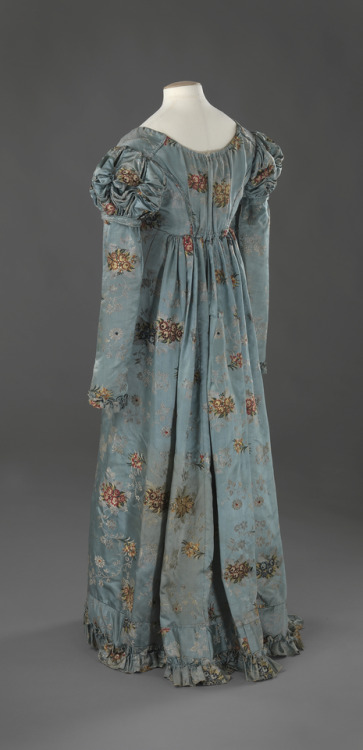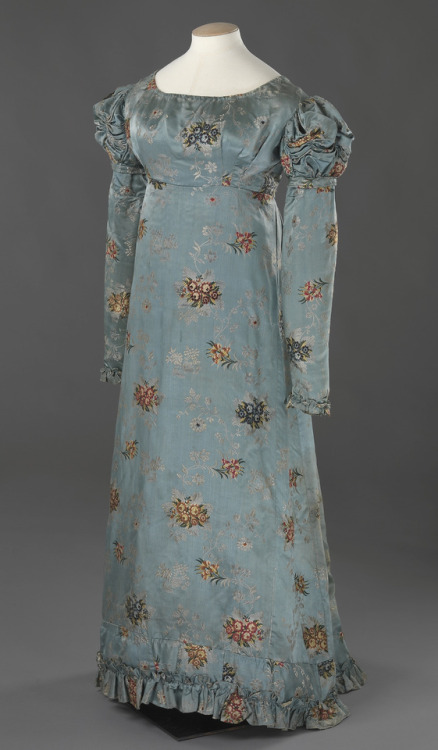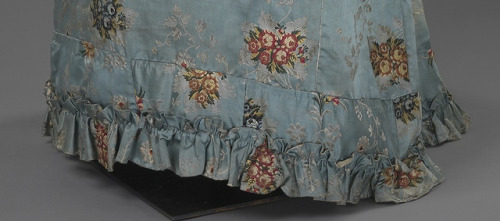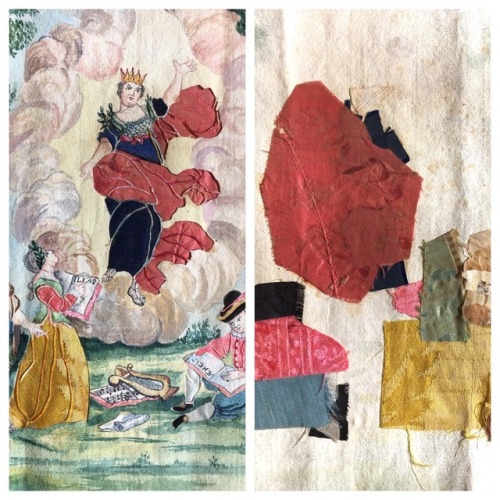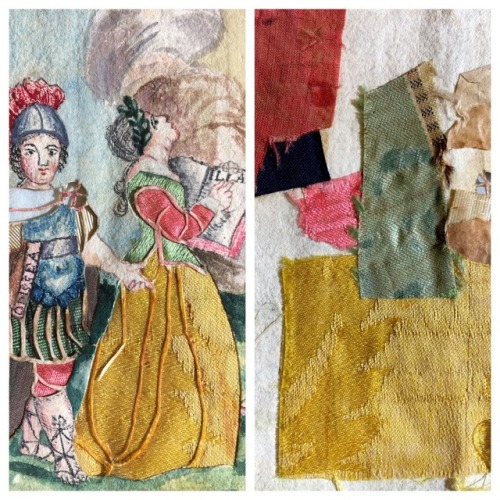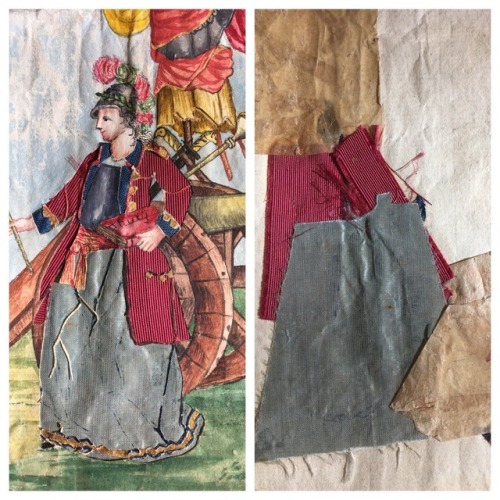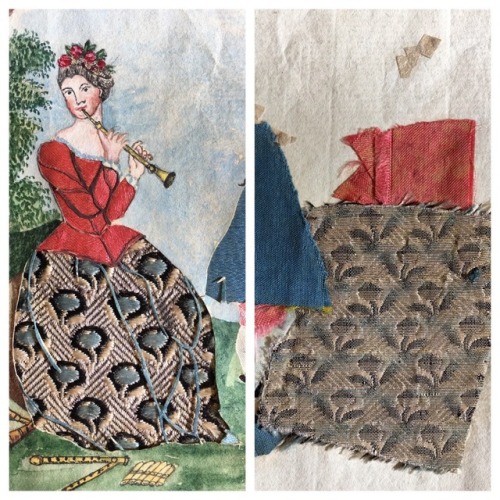#18th century fabric
Silk brocade dress from the 1820s
If looking closer, it becomes clear the hem is a patchwork of scraps, though the flower pattern appears fairly continued. This dress is an example of rich 18th century silk brocades being re-used in a later century and for a new fashion. Although light cotton fabrics are the “typical” look of a Regency dress, a fine silk like this would definitely have been appreciated, and it has been utilized in the best possible manner.
I suspect the ruffle on the hem and the sleeves is original pieces from the previous garment. But other details, like the skillfully tabbed and puffed sleeves, looks like a brand new detail.
From The National Museum in Oslo (OK-07407)
Post link
At work I came across these papercut/aquarelle artworks from 1773-75.
What I loved about them wasn’t necessarily the depicted muses, or the style of the painting. It was the cutout areas, which had been filled with scraps of fabrics on the reverse. The scraps showed traces of seams, selvages and reverse fabric sides. Looks like re-used garment pieces, or maybe cut-offs. For a dress historian this is HIGHLY interesting!
The motifs shows Calliope (top), Clio (bottom left) and Euterpe (bottom right). There is also a Melpomene in the collection; the rest of the muses are alas missing. The artist is unknown, but the backside shows a signature AMM, and various months written in English, plus years ranging from 1773-75. So by all accounts English origin. You can see the full motifs here:
http://samling.nasjonalmuseet.no/no/object/OK-17260
Post link

